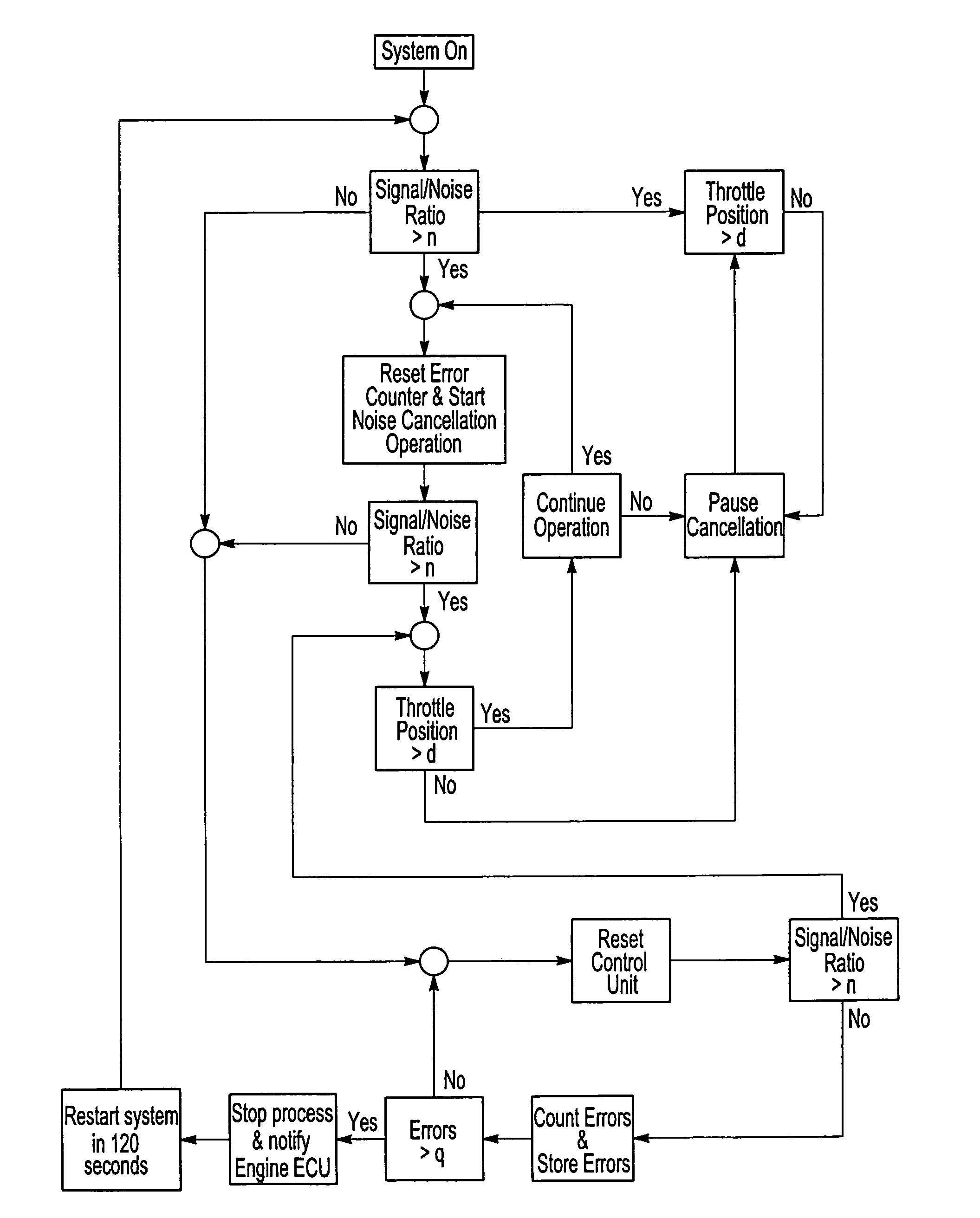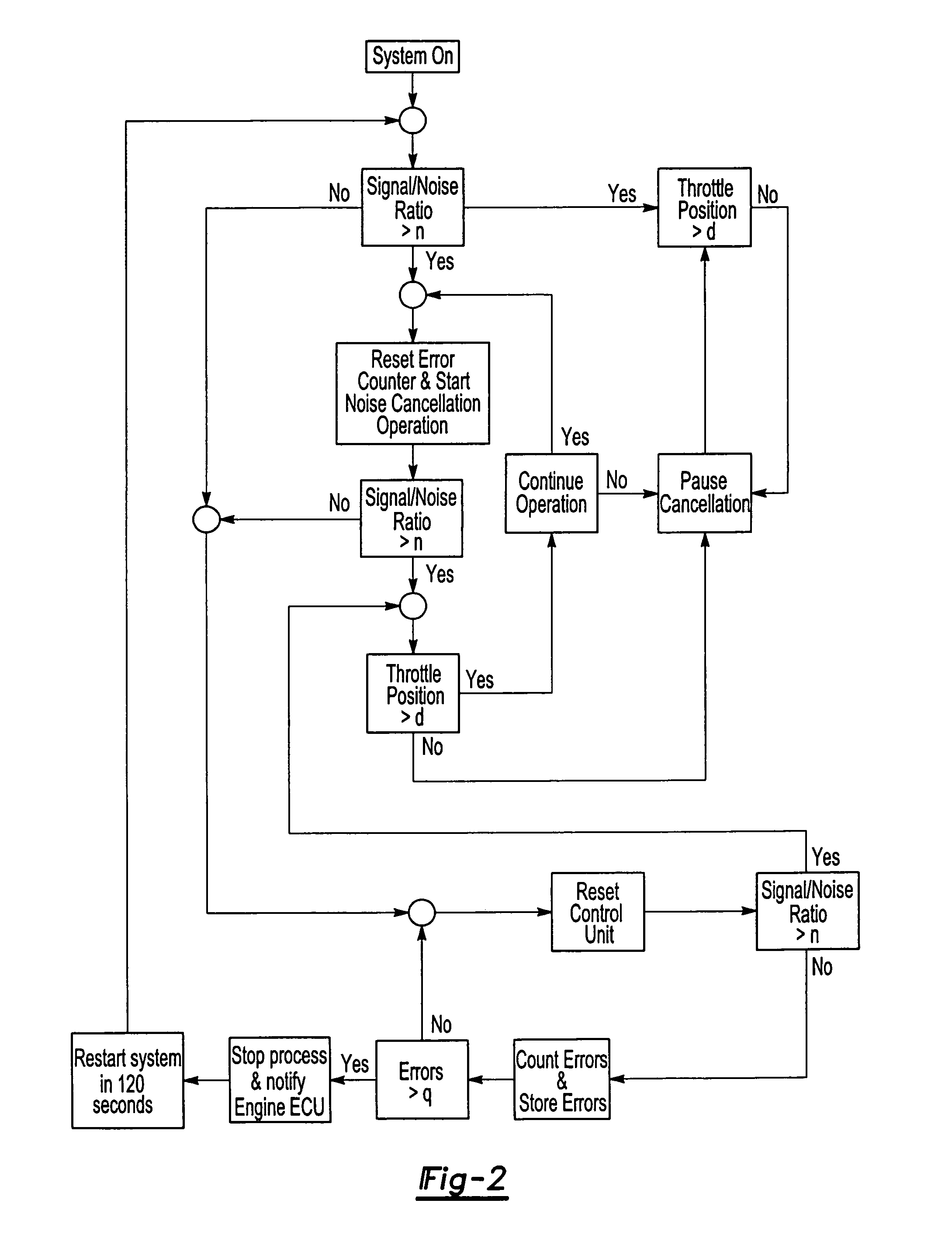Active noise cancellation stability solution
a technology of active noise and stability solution, which is applied in the direction of fuel intake silencers, combustion air/fuel air treatment, instruments, etc., can solve the problems of system creating unwanted high-pitched sound, system prone to unwanted high-pitched sound, and temporarily disabled noise cancellation feature, so as to reduce engine noise, control noise attenuation, and avoid the effect of noise creation
- Summary
- Abstract
- Description
- Claims
- Application Information
AI Technical Summary
Benefits of technology
Problems solved by technology
Method used
Image
Examples
Embodiment Construction
[0015]FIG. 1 illustrates the method and system of noise attenuation of an embodiment of the invention. Pictured schematically are air induction body 10 and speaker 14, preferably disposed in air induction body 10, control unit 18, engine 22, and sensor 26, here an error microphone, and reference sensor 27, such as an engine tachometer. Engine noise 30 from engine 22 travels through air induction body 10 out of mouth 34 of air induction body 10. As known, during normal operation, control unit 18 has a noise cancellation feature that generates a noise canceling signal 38 through speaker 14. Because noise canceling signal 38 is out of phase with engine noise 30, both noise canceling signal 38 and engine noise 30 are thereby attenuated.
[0016]The invention includes at least one sensor 26 for sensing a system condition, which is in communication with control unit 18. When a predetermined system condition is detected by sensor 26, the noise cancellation feature of control unit 18 is disabl...
PUM
 Login to View More
Login to View More Abstract
Description
Claims
Application Information
 Login to View More
Login to View More - R&D
- Intellectual Property
- Life Sciences
- Materials
- Tech Scout
- Unparalleled Data Quality
- Higher Quality Content
- 60% Fewer Hallucinations
Browse by: Latest US Patents, China's latest patents, Technical Efficacy Thesaurus, Application Domain, Technology Topic, Popular Technical Reports.
© 2025 PatSnap. All rights reserved.Legal|Privacy policy|Modern Slavery Act Transparency Statement|Sitemap|About US| Contact US: help@patsnap.com



